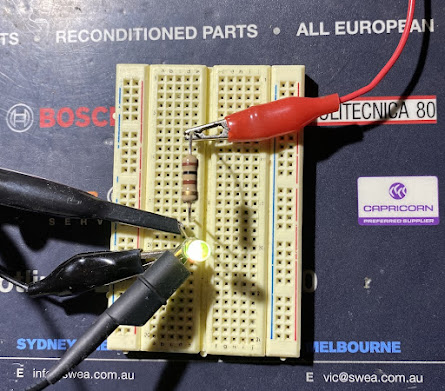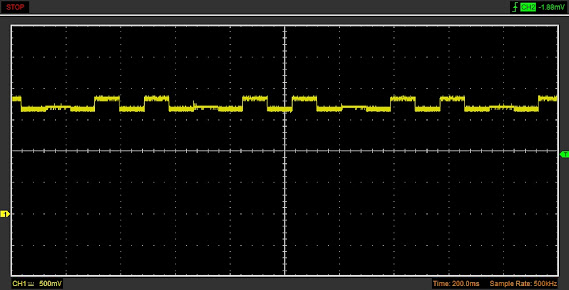This article shows you how to make an oscillator from a blinking LED or color-changing (color cycling) LED.
Figure 1: LEDs Oscillator.
In case you do not know, color-changing LEDs change in color every second, and blinking LEDs turn ON and OFF every second.
You can see the circuit working in this video:
You do not need two LEDs. You can create an LED oscillator with just one blinking LED. However, this article will show you how adding a second LED (even a non-blinking one) will make the output signal more interesting.
Circuit 1
I simply connected a color-changing LED in series with
a resistor to 3 V power supply:
I used a small breadboard to make the circuit:
Figure 3: Make the Circuit 1.
I connected the non-grounded LED pin to Hantek 6022BE USB Oscilloscope:
Figure 4: Testing Circuit 1.
The amplitude was only 62.7 mV peak to peak. You might think we need a blinking LED that turns ON and OFF. However, read what happens in the next section of this article.
Circuit 2
I modified the circuit by simply adding a regular (not blinking LED) in series with LED and resistor.
I connected the circuit 4.5 V battery holder that is almost 5 V:
Figure 6: Make the Circuit 2.
I connected the non-grounded LED pin to Hantek 6022BE USB Oscilloscope:
Figure 7: Testing Circuit 2.
Now the amplitude is 267 mV and you can clearly see it in the changing frequency square wave oscillation in the plot.
Figure 8: Testing the Circuit 2 Photo.
Conclusion
The oscillating component does not have to be a blinking LED. It could be a buzzer, electric bell, or motor.








No comments:
Post a Comment